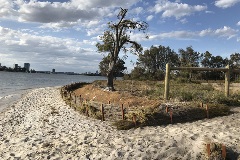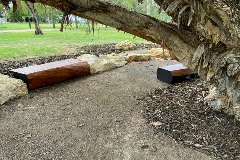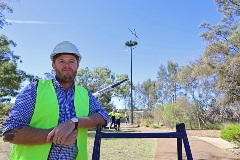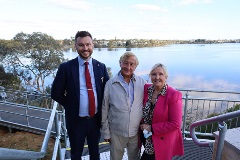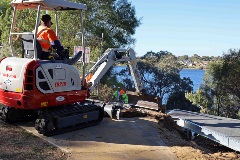CWSP Foreshore
The City has developed a Masterplan for the stretch of foreshore from Clontarf through to Waterford and Salter Point. The Masterplan provides a consolidated management strategy recognising the ecological, cultural and recreational values of the area.
The Clontarf-Waterford-Salter Point (CWSP) Foreshore consists of a network of natural reserves, estuarine conservation wetlands, Bush Forever site 333 and public open space. These are the most extensive wetlands in the lower reaches of the Swan and Canning Rivers and there is no similar foreshore vegetation elsewhere along these rivers.
This foreshore has been reserved for conservation and passive recreation under the Metropolitan Regional Recreation Scheme. It encompasses wide open spaces for leisure and recreation activities, sites of significant aboriginal heritage and stunning river views.
Stretching from the western boundary of the Cygnia Cove residential estate to Redmond Street in Salter Point, the CWSP area can be divided into four distinct precincts:
- Precinct 1: Clontarf and Andrew Thomson Conservation Reserve
- Precinct 2: Bodkin Park
- Precinct 3: Sandon Park
- Precinct 4: Salter Point Reserve to Redmond Reserve
The Draft Masterplan was endorsed for public comment by Council at the July 2018 meeting. The revised Masterplan was presented to Council and unanimously endorsed at the April 2019 Council Meeting.
The Clontarf-Waterford-Salter Point (CWSP) Foreshore, known as the Canning River wetlands, occupies approximately 34 hectares of Canning River foreshore land. The area provides habitat for over 74 species of land and water birds including 14 significant bird species, 12 reptiles and 6 amphibian species.
The foreshore is coming under pressure due to climate change, foreshore erosion, urban infill, and increased recreational use. The Masterplan provides a strategic framework to assist the City in managing these pressures into the future. It addresses environmental issues, showcases aboriginal cultural and heritage values and provides recommendations for the upgrade of existing facilities and infrastructure.
Related documents
Masterplan objectives

